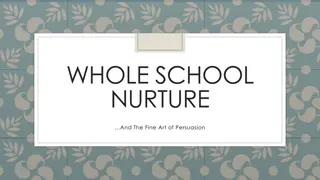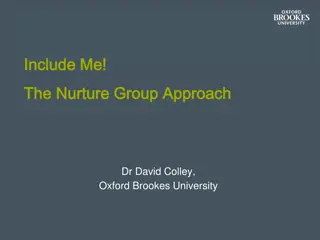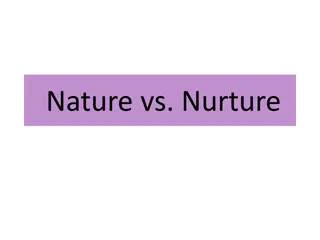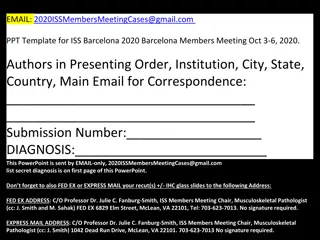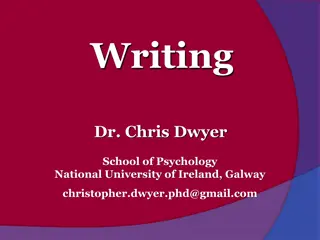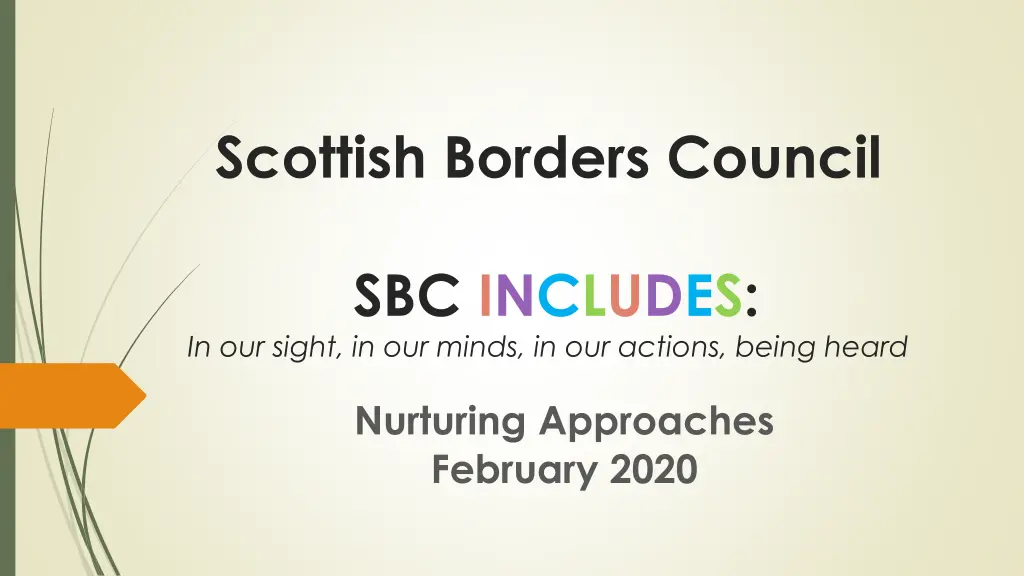
Scottish Borders Council Inclusion Framework
Scottish Borders Council prioritizes inclusion and nurturing approaches in education to ensure all children and young people are heard, supported, and included. Through their policies and guidelines, the council aims to promote positive relationships, deliver inclusive practices, and support mental health and wellbeing needs. Exclusion is viewed as a last resort, with a focus on providing targeted support and opportunities for every child to succeed.
Download Presentation

Please find below an Image/Link to download the presentation.
The content on the website is provided AS IS for your information and personal use only. It may not be sold, licensed, or shared on other websites without obtaining consent from the author. If you encounter any issues during the download, it is possible that the publisher has removed the file from their server.
You are allowed to download the files provided on this website for personal or commercial use, subject to the condition that they are used lawfully. All files are the property of their respective owners.
The content on the website is provided AS IS for your information and personal use only. It may not be sold, licensed, or shared on other websites without obtaining consent from the author.
E N D
Presentation Transcript
Scottish Borders Council SBC INCLUDES: In our sight, in our minds, in our actions, being heard Nurturing Approaches February 2020
SBC Inclusion Polices and Guidelines Scottish Borders Council has a clear commitment to ensuring children and young people are in our sight, in our minds, in our actions and are being heard This is part of the Council s vision to raise attainment and achievement for all learners - whilst ensuring full participation and inclusion. A number of documents have been designed to provide all learning establishments within Scottish Borders Council a clear framework to build on the developing inclusive culture. These documents have been supported by and align with national advice and policy.
The Inclusion Framework and its associated documents aims to support schools and establishments to: 1. Promote positive relationships and behaviour across all learning establishments. 2. Ensure schools deliver inclusive practice through effective learning and teaching and maintain positive learning environments for all children and young people. 3. Support the implementation of evidence-based approaches by identifying and providing core professional learning and development for staff. 4. Ensure compliance with legislation and National and Local Guidance.
5. Ensure the mental health and wellbeing needs of our children and young people are included through recognising their rights and hearing their voice. 6. Ensure that every child has the same opportunity to succeed, with a particular focus on closing the poverty- related attainment gap. 7. Provide targeted support within local communities to meet the needs of our most vulnerable children, young people and families. 8. Ensure that exclusion is only ever used as a last resort and provide guidance to schools to ensure appropriate support is in place for the child or young person so that they are able to re-engage in education.
SBC INCLUDES: Nurturing Approaches
Why Nurture? In response to feedback from Inclusion Audit Nov 2018 Aligns with and closely follows Growing Confidence and Restorative Practices Recommended and endorsed by Education Scotland Successfully rolled out in a number of other authorities Lots of research and 50 years of evidence of improvement (Nurture UK) We believe in an inclusive education system. Currently pupils with social, emotional and mental health needs are more likely to be excluded and are often unable to achieve their full potential in the classroom. (NurtureUK.Org 2019) "If pupils don't feel happy and safe within school, they won't learn anyway, so you can carry on teaching 'till your heart s content but they won't take it in if they don't feel happy, secure and their basic needs aren't being met. (NurtureUK.Org 2019)
Nurturing Steering Group Early Years Primary Secondary Inclusion & Well Being Service Educational Psychology service Community Learning & Development Quality Improvement Officer
Purpose and Aim of Group Look Outwards by visiting and observing two other authorities where this has successfully been implemented to gather evidence, advice and resources Plan and implement the roll out of Nurturing Approaches across all learning communities in the Scottish Borders by; Developing a framework for Nurture Implementation including staffing, resources, training programmes Developing and writing whole school nurture guidelines for primary and secondary (Universal Approach) Developing and writing Secondary Nurture Base Guidelines (Targeted Approach) Developing and writing Primary Nurture Base Guidelines (Targeted approach)
Where does Nurture come from? Attachment theory The growing understanding of the ways that children s early experiences influence their beliefs about themselves and about others. The nature of relationships throughout children & young people s development. The effects of negative experiences Constructivist/Social Capital theory We inhabit a social world which is built around our connections with others. (e.g. community groups, sporting activities, afterschool clubs) The language we use helps construct and shape the experiences we have and the ways we make sense of them. Risk and resilience models Individual and environmental factors (e.g. poverty, family relationships etc)
The six principles of nurture 1. Learning is understood developmentally 2. The classroom offers a safe base 3. The importance of nurture for the development of self- esteem is recognised 4. Language is seen as a vital means of communication 5. All behaviour is viewed as a form of communication 6. The importance of transitions in the lives of children and young people are acknowledged
1. Learning is understood developmentally Awareness that children have a range of developmental needs what we expect from a child at different stages of development. (e.g. at P1, S1) Provide opportunities to play close to adults to promote positive communication, language and literacy. Take into account the varied profile of a child s development children can be at a different developmental stage from their chronological stage. Basis: emotions and behaviour are interlinked during developmental stages of young people. This draws on our increasing insights into the nature of the developing brain. There is a need to dovetail learning with the developmental age of the young person. This could be both academical and social and might include, differentiation, enhanced transition, group work.
Think age not stage We need to ensure that we: Provide opportunities for training about attachment and brain development Growing Development Understand where the young person is developmentally Provide differentiated opportunities for social and emotional aspects of learning Avoid thinking that children and young people of a certain age should assumptions Model nurturing relationships with an appropriate communication style There is significant evidence that relationships can bring about meaningful change
2. The classroom offers a safe base Creating a context of security, comfort, relaxation and learning Trusting relationships are established The school day is structured and calm Domestic atmosphere Basis: Attachment theory stresses the importance of seeking safety and how that influences behaviour and emotional development.
3. The importance of nurture for the development of well-being/self-esteem is recognised A shared understanding about why we are doing this Adults value children Work to establish a close, positive relationships Staff recognise, anticipate and respond to needs. Shared activities Basis: Attachment theory children experience a healthy attachment cycle.
4. Language is seen as a vital means of communication Aware of how language constructs and shapes understanding and beliefs, for both children and adults Using opportunities to extend conversations, planning, recalling. Sharing feelings, thoughts together. Creating expectations about communication Basis: The way we use language helps us construct our social world. The way behaviour and emotions are described influences the way they are understood.
5. All behaviour is viewed as a form of communication Looking beyond surface behaviour to gain greater insight. Thinking about what the behaviour is telling us about where the child is . Avoiding straightforward rewards/sanctions approaches Firm management of challenging behaviour Logical natural consequences Nurture is not a soft option Basis: Behaviour is more than just the product of sanctions and rewards but frequently has less visible meaning.
6. The importance of transitions in the lives of children and young people is acknowledged Recognising that transitions can be powerful and, at times, threatening for vulnerable children Creating daily opportunities to learn ways of managing transitions. Offer support at times of stress. Basis: transitions involve changes in relationships. Young people who have experienced painful traumatic events can be particularly unsettled by transitions because of the echoes they conjure up.
What will the Nurture Rollout look like? 1. UNIVERSAL APPROACH Whole School Nurturing Approaches All school staff will be trained in whole school nurturing approaches (universal approach) with a view to ensuring that all schools in SBC become nurturing establishments. All staff will be expected to practice nurturing approaches in every classroom and in all establishments throughout the learning community. SBC will provide all training and materials. This is a central component to SBC s Inclusion agenda. Mandatory introductory training towards a whole school Nurturing Approach will take place on the August In-service day for all schools. This will be a half day (3hrs) training session. Full guidance, resources and timings will be provided. We will build in a Quality Assurance programme for schools as part of their Quality Assurance/Attainment meetings throughout the year. All schools will complete a readiness questionnaire and self-evaluation toolkit to determine future bespoke training for schools/clusters. We will build in refresher training sessions for staff as well as develop an ongoing programme of training for new staff and Newly Qualified Teachers.
2. TARGETED APPROACH Secondary Nurture Bases - Each Secondary school will develop a Nurture Base to deliver targeted support to identified young people. This is classed as a targeted nurture approach. - This will be led and managed within each school s current Pupil Support Department. - Schools have identified key staff who will attend 4 day, accredited training. - The staffing of bases will differ in each secondary school/learning community as per the needs of young people. (But there is an expectation to include at least a teacher and ANA who will link with Home School Link Workers, Youth workers etc) - These staff will all be trained to practice targeted SBC nurturing approaches and how to work in partnership with classroom teachers. - It is expected that Nurture bases will be set up in all secondary schools with effect from August 2020. - Full guidance and additional resources will be provided. - We will build in a Quality Assurance programme for all Nurture Bases.
3. TARGETED APPROACH Primary/Early Years Nurture Groups - No final decisions have been made around this yet. - Discussion and engagement is still taking place as part of the authority s Pupil Support Review. - Further planned training and discussions will be had after each school has completed their self-evaluation in order for the authority to best place targeted Nurture groups in primary/Early Years settings
Training Programme 6th & 7th February 2020 and 19th & 20th March 2020 Targeted Nurture Training 2 days followed by 2 days in following month. This training is specifically for identified Nurture Base leads in Secondary schools. (At least one teacher and one support worker from each school) 26th February Universal Train the Trainer . 45 candidates from across all clusters will be attending together with all Educational Psychologists Half Day August In-service Day, Mon 17th August 2020 - Introduction to attachment theory and 6 principles of nurture delivered to all staff in all schools in clusters. August September 2020 - 2 x CAT sessions for individual schools - All staff to complete: A Nurture Readiness questionnaire and What does a Nurturing School look like evaluation (This will determine the next layer of training for each school) - Primary schools will identify a Nurture Lead in each school. Further 2 day training will be arranged. October June 2020 CAT sessions identified for school staff to look at Guidelines, Framework and how to embed in practice in schools. CAT sessions and/or In-service Days - (to be agreed) This will be part of 3 year roll-out.
How can parents be involved? We envisage this to be on an individual school basis Parent Partnership - involving parents and families in developing the school s vision around nurture (and the above activities), transition planning, consultation etc Family Learning schools will support parents and families to understand the nurturing principles (if relevant) and the key features of a nurturing approach, attachment and child development. This may include, for example; developing parent leaflets, home activities, parent workshops, nurture- based school initiatives











